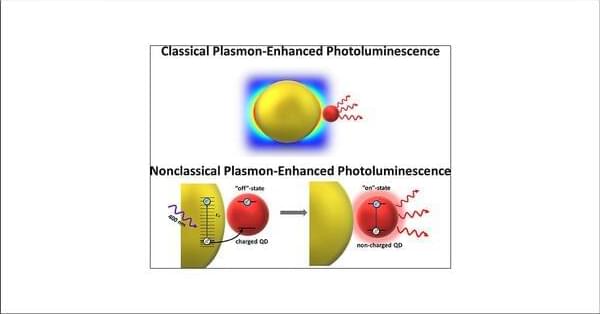Metal-enhanced photoluminescence is able to provide a robust signal even from a single emitter and is promising in applications in biosensors and optoelectronic devices. However, its realization with semiconductor nanocrystals (e.g., quantum dots, QDs) is not always straightforward due to the hidden and not fully described interactions between plasmonic nanoparticles and an emitter. Here, we demonstrate nonclassical enhancement (i.e., not a conventional electromagnetic mechanism) of the QD photoluminescence at nonplasmonic conditions and correlate it with the charge exchange processes in the system, particularly with high efficiency of the hot-hole generation in gold nanoparticles and the possibility of their transfer to QDs.
